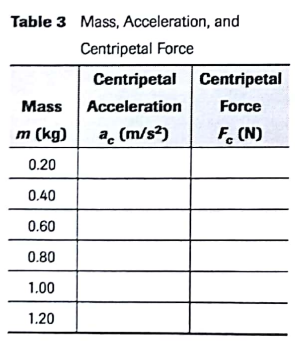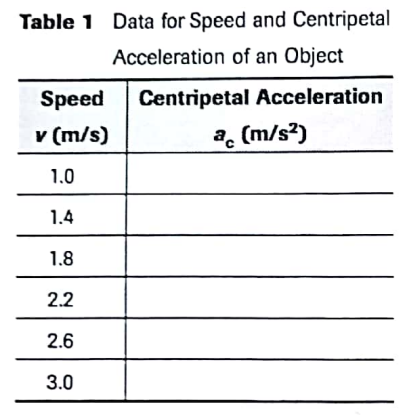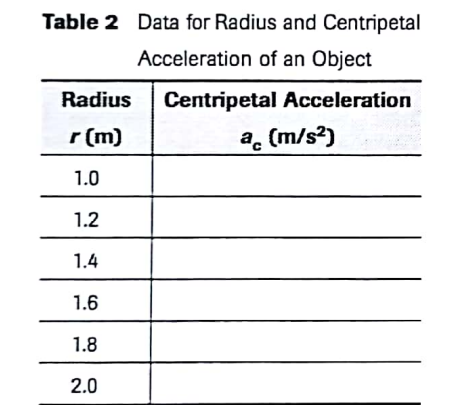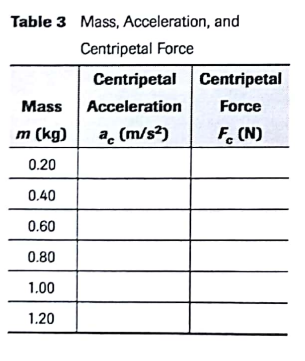Question
In this investigation, you will use a computer simulation program (https://www.walterfendt.de/html5/phen/circularmotion_en.htm) to look at the relationships among the magnitude and direction of the centripetal acceleration

In this investigation, you will use a computer simulation program (https://www.walterfendt.de/html5/phen/circularmotion_en.htm) to look at the relationships among the magnitude and direction of the centripetal acceleration of an object moving in a circle, the magnitude and direction of the centripetal (net) force acting on the object, the speed of the object, and the radius of the circular motion. Note that in this simulation, you will consider an object that is attached to a string fixed in position at one end. We will not consider the force of gravity. The equation for calculating the centripetal acceleration is: Ac= V^2/r
where v is the speed of the object and r is the radius of the circle. The equation for calculating the centripetal force acting on an object is: Fc= mv^2/r
where m is the mass of the object. Questions (i) What is the mathematical relationship between the centripetal acceleration of an object in uniform circular motion and (a) the speed of the object and (b) the radius of the circle? (ii) What is the mathematical relationship between the centripetal acceleration of an object in uniform circular motion and the radius of the circle?
Hypothesis/prediction:
(a) What is the relationship between the centripetal acceleration and the speed of an object? the centripetal acceleration of an object and the radius of the circle?
(b) Sketch two graphs to illustrate your answers to (a).
Materials:
https://www.walter-fendt.de/html5/phen/circularmotion_en.htm
procedure:
Use the computer simulation program (the link) to simulate an object on a 1.0-m string, moving in a circle at a speed of 1.0 m/s. For each of the speeds in Table 1, determine the magnitude of the centripetal acceleration of the object.



Step by Step Solution
There are 3 Steps involved in it
Step: 1

Get Instant Access to Expert-Tailored Solutions
See step-by-step solutions with expert insights and AI powered tools for academic success
Step: 2

Step: 3

Ace Your Homework with AI
Get the answers you need in no time with our AI-driven, step-by-step assistance
Get Started


